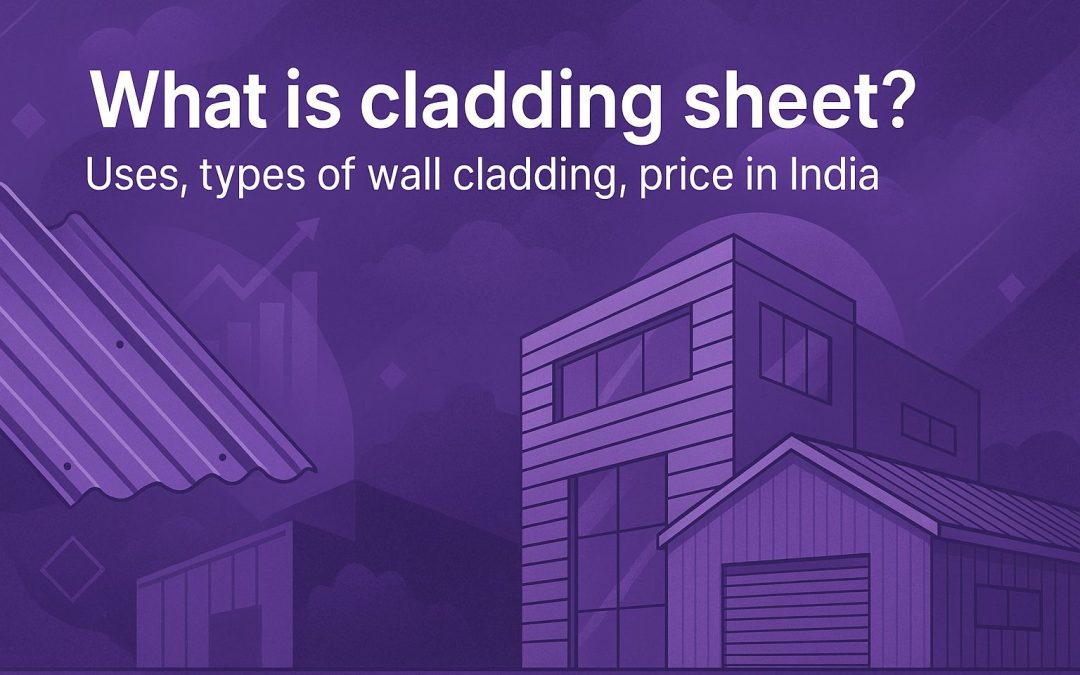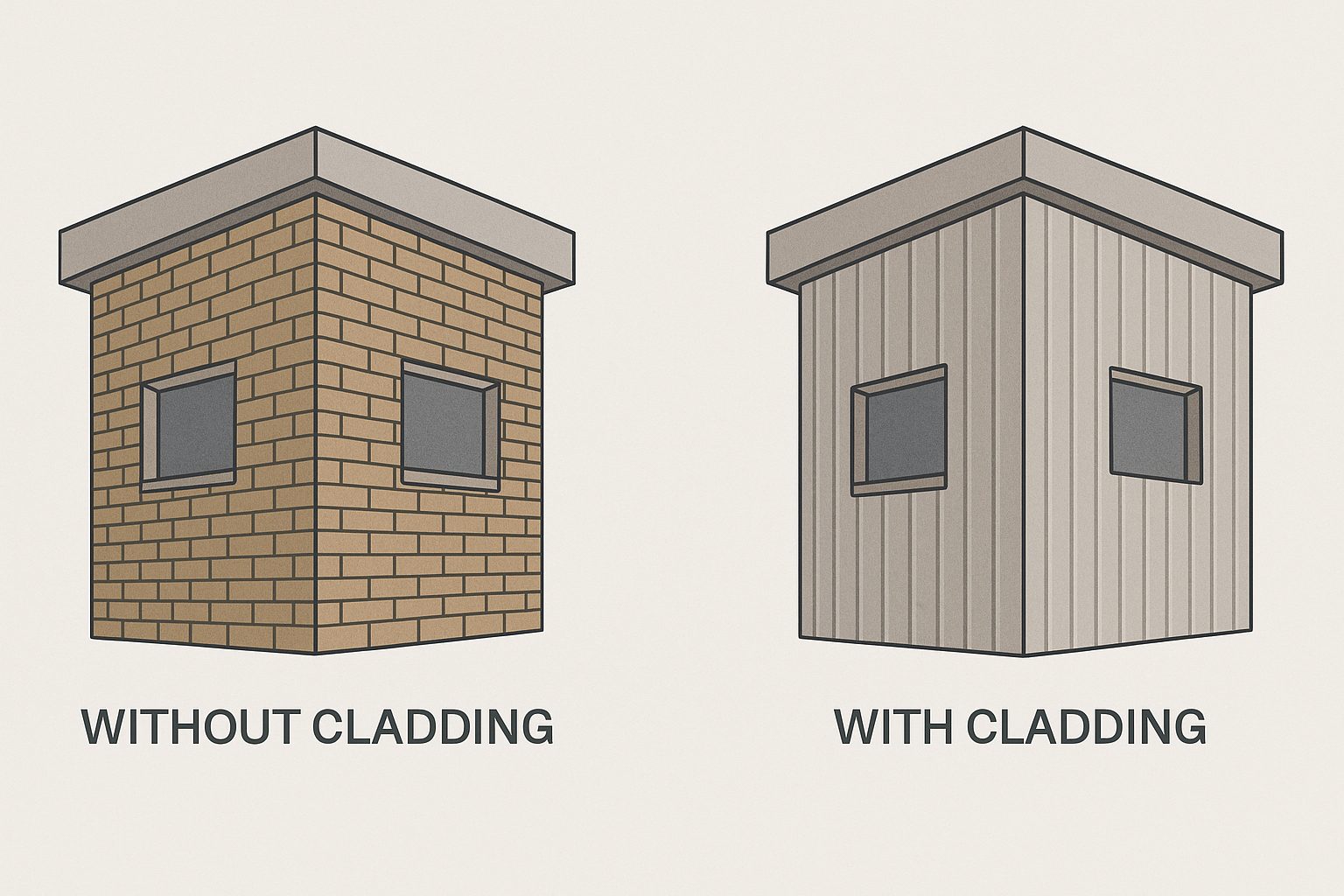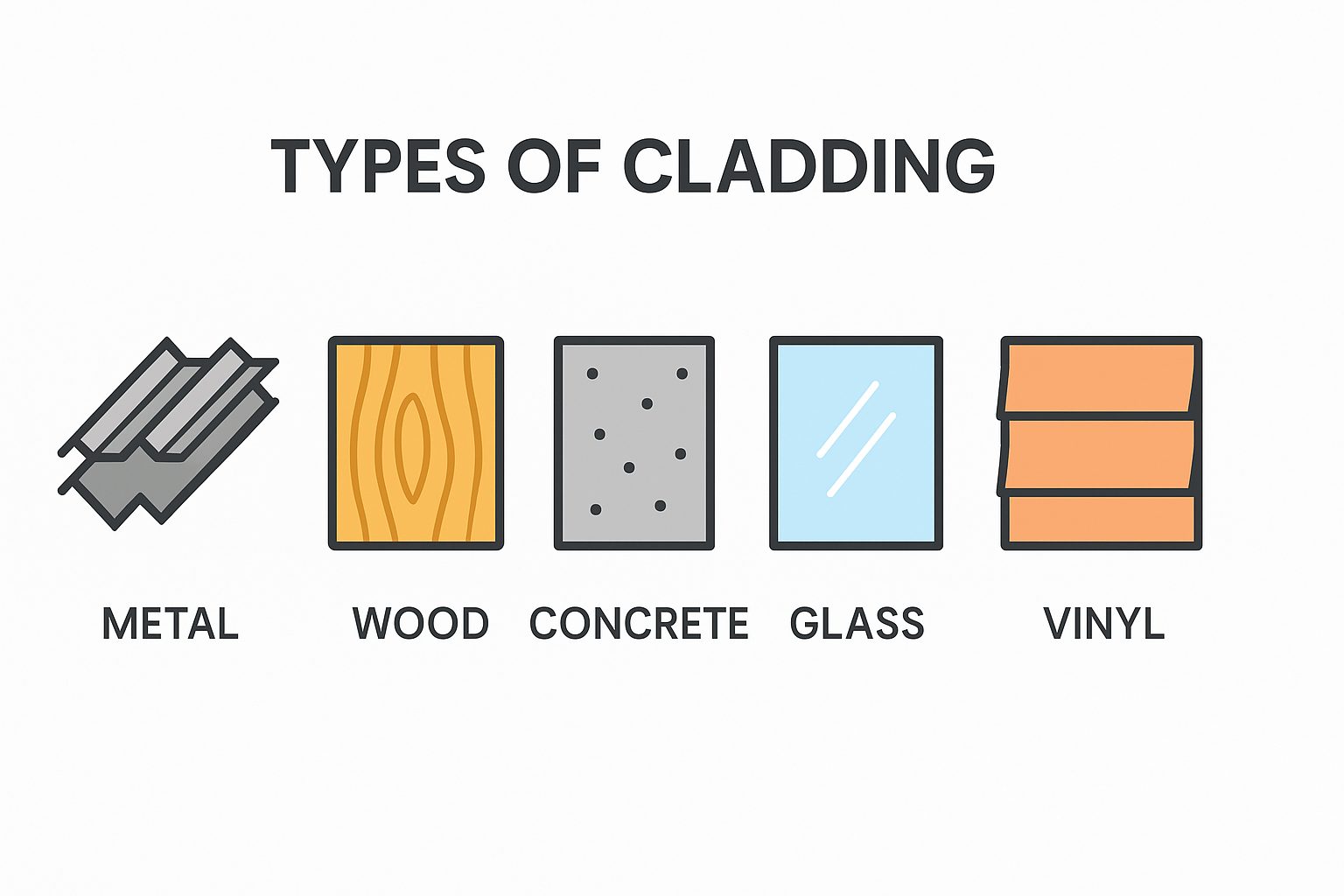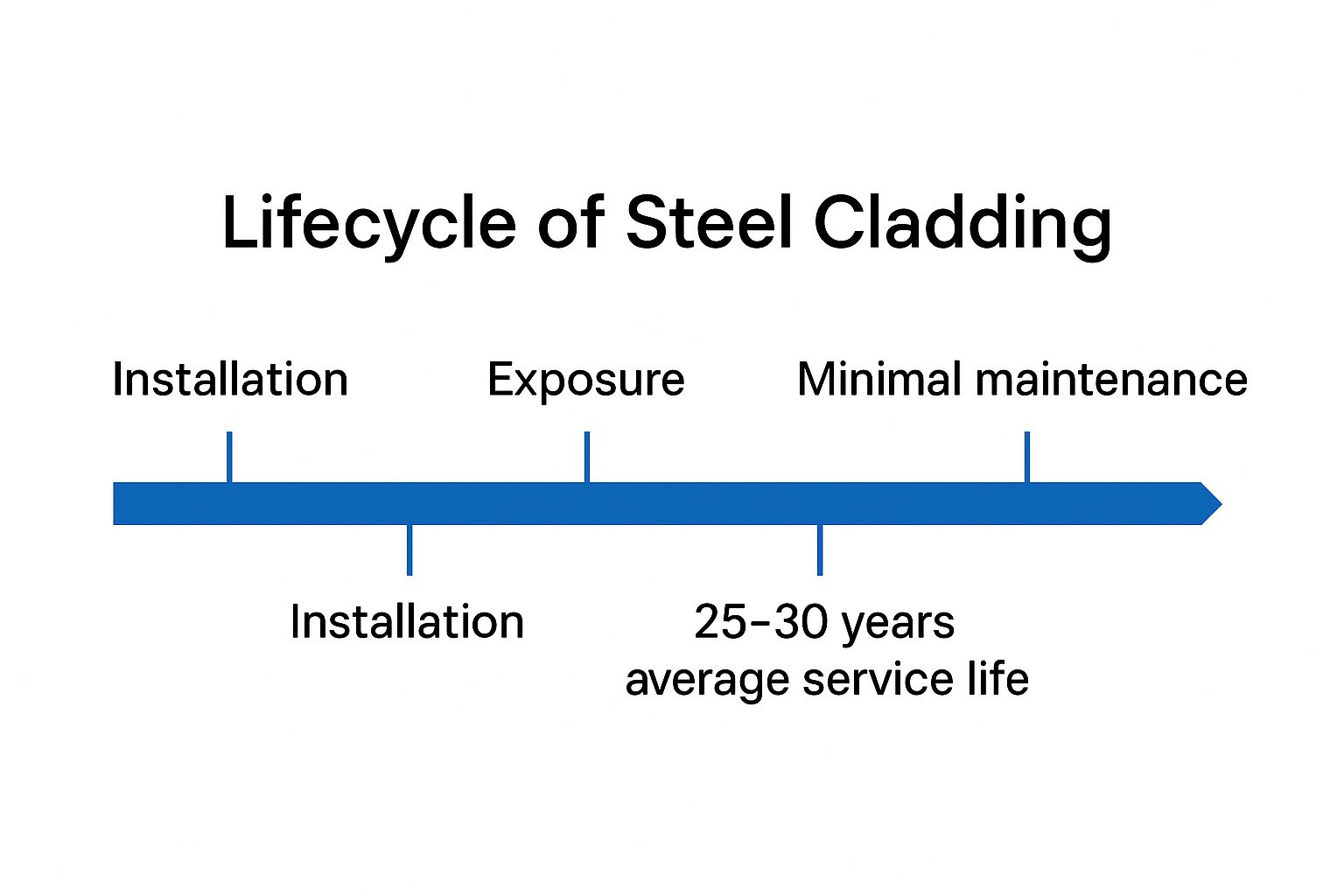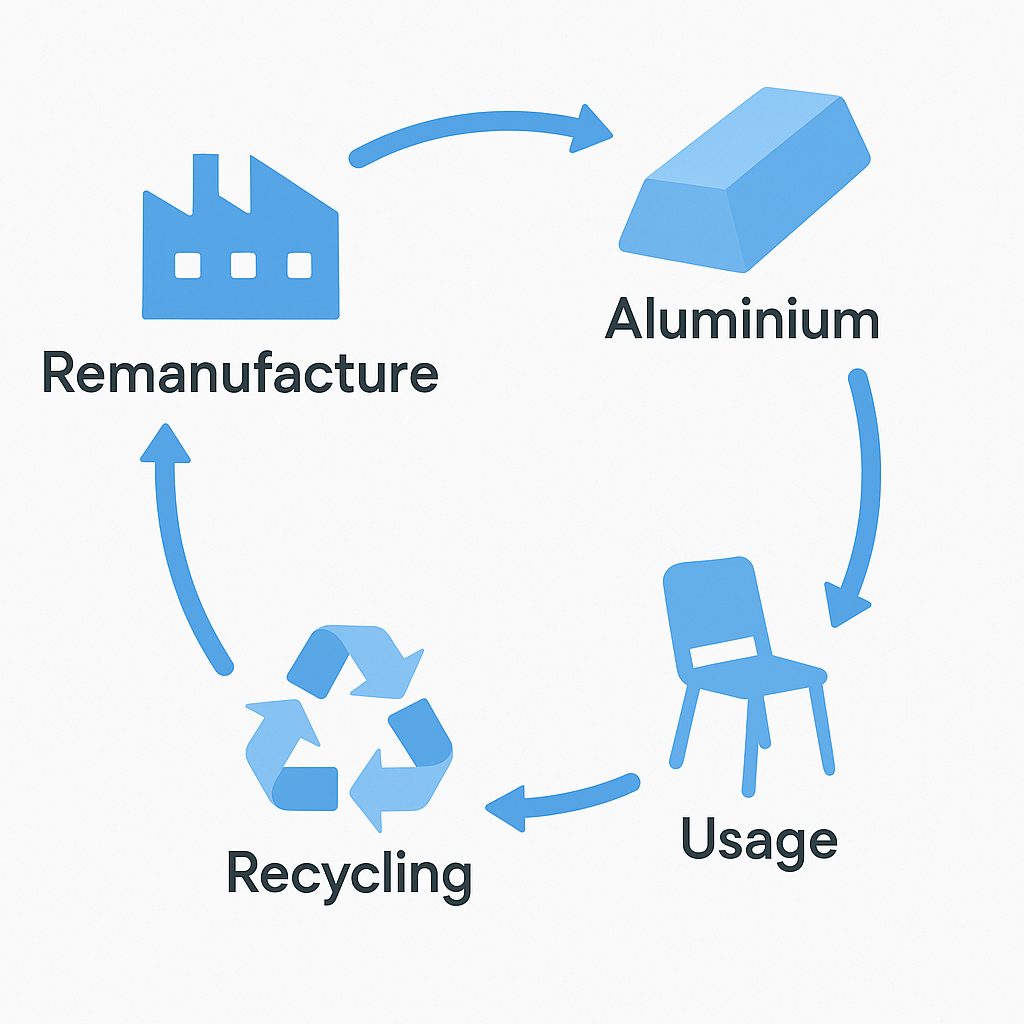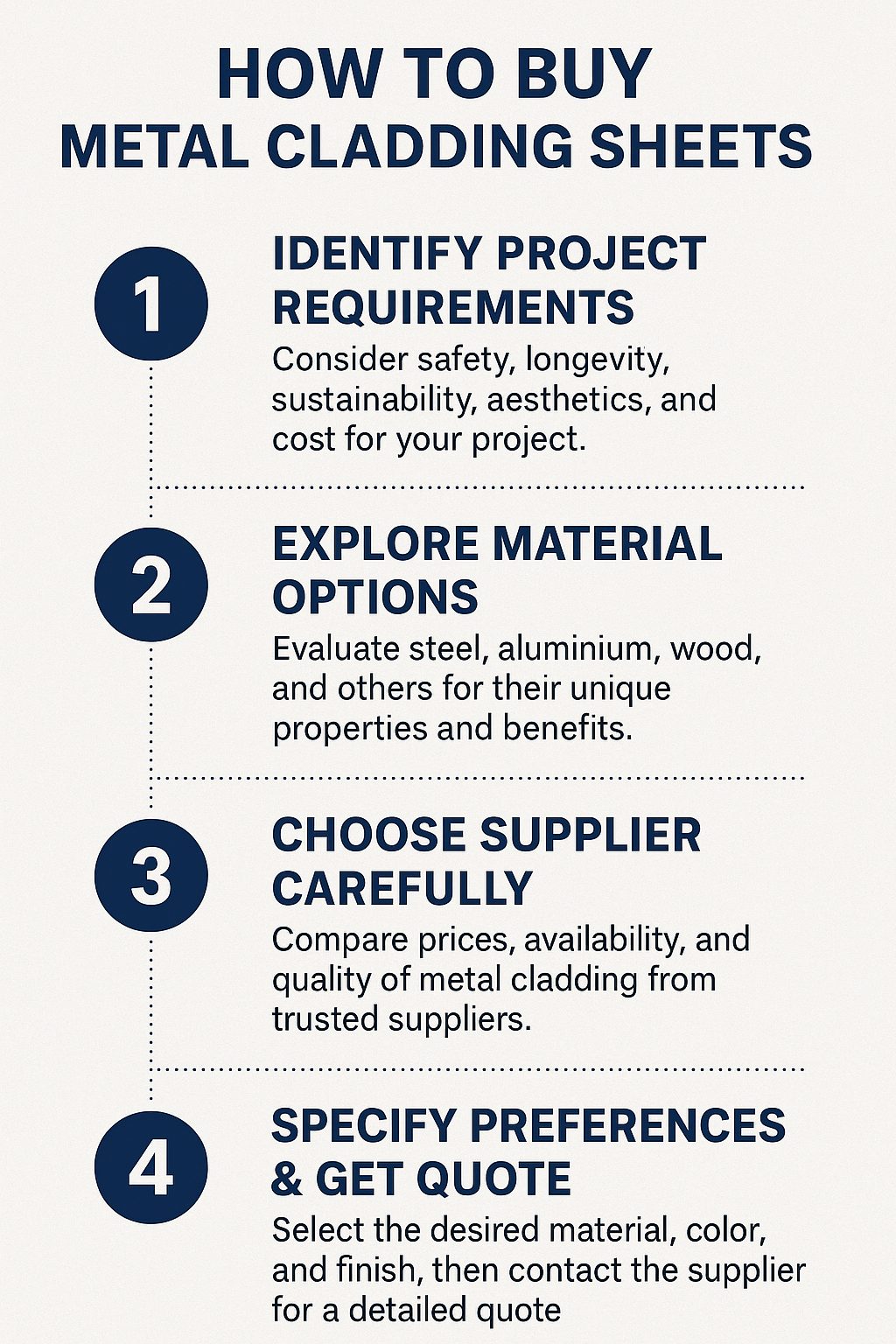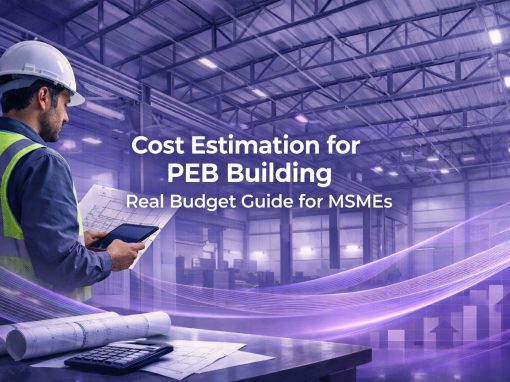Table of Contents
If you are an architect, or into construction of buildings, or a steel supplier or manufacturer, steel cladding sheet is something you should be familiar with. Cladding is not a new concept, but with times and advancement in technology, it has evolved. Cladding sheets, used in building structures, is mounted on a metal cladding frame to act as a protective layer to keep buildings from environmental damage.
In this blog, we will take a look at cladding sheet meaning, the types of cladding (e.g., wall cladding sheet), the uses and purpose of cladding (e.g., cladding sheet for insulation), and the range of metal cladding used (e.g., steel or aluminium cladding sheet). Let’s start.
What is cladding sheet?
Let’s first look at cladding sheet meaning. Put simply, cladding sheets are metal sheets that are used over architectural design or building structures to protect them from environmental damage or for enhancing its aesthetic value.
It’s not a coating of paint, like in galvanised steel, but a separate entity that is attached to the structure. It has both functional value and visual appeal, in that a metal sheet is attached to panels and used to cover surfaces.
Based on requirements, metal cladding sheets can be made of steel, copper, aluminium and others. Steel cladding sheets, due to its non-corrosive, heat resistant and durable nature, are naturally the most preferred form.
Did you know? In sheds, factories, godowns — steel cladding is used because it’s tough, doesn’t need much care, and handles weather better than regular wall finish.
Also read: Sheet bending machine – How sheets are deformed and shaped
What is wall cladding sheet?
📌 June 2025 Market Update:
Steel cladding sheet prices in India have seen a mild uptick this year, primarily due to higher raw material and freight costs. For instance, 0.45mm Galvalume sheets are now averaging ₹320–₹360/sq.m, while colour-coated sheets are touching ₹450–₹480/sq.m depending on thickness and finish.
For large projects, buyers are advised to request live quotations to account for daily price variations.
From our discussion on what is cladding sheet, we now understand its meaning. Wall cladding sheets, naturally have a special place in building construction projects – residential and commercial, for exterior protection and architectural elegance.
Wall cladding sheets are used to protect the underlying structure from weather elements and provide insulation, the degree of which is determined by the choice of material used.
Popular materials for wall cladding sheets include: vinyl, metals, timbre, concrete, among others. While vinyl wall cladding is affordable and versatile, metal cladding especially steel and aluminium is used for its durability, anti-corrosion and fire-resistant properties, and sleek look.
The choice of wall cladding materials can alter the look and feel of a building, its long-term maintenance cost, and sustainability aspects.
Also read: Role of steel in construction sector
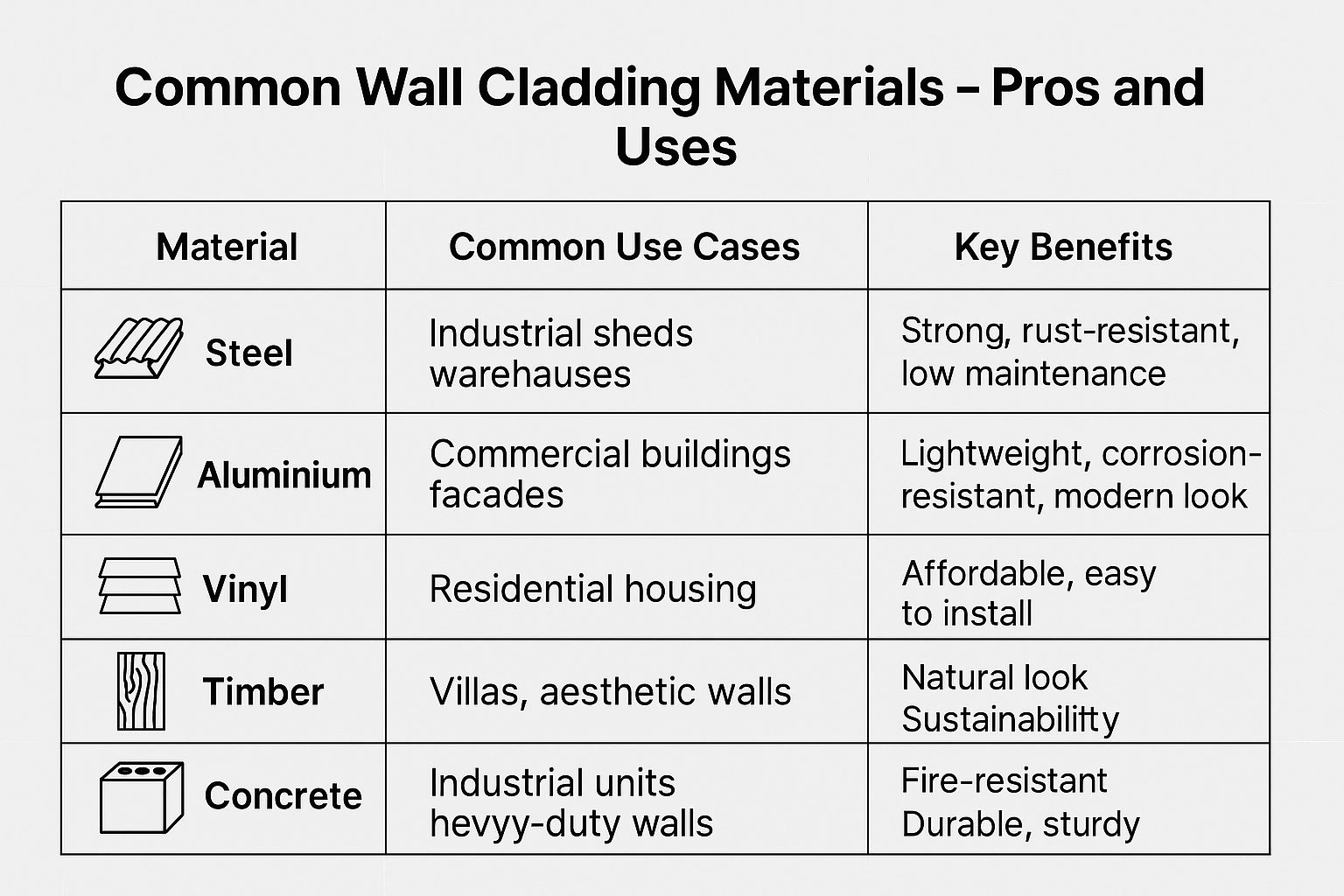
What is the purpose of cladding sheets?
A common question at this point is, why are cladding sheets used or what’s the purpose of cladding sheets?
Metal cladding plays a pivotal role in construction and design. Not only do they act as an insulator and provide a protective shield to the building from environmental elements (e.g., heat, moisture, humidity), but they also enhance its external look.
Exterior cladding sheets are available in various colours and textures (based on the metal used) and can elevate the look of the building. In certain cases, they can even double as decorative additions to hide the unpleasant or pain-details of the building.
Also read: Steel frames used in construction
What are the types of cladding?
The choice of cladding sheet material is a critical decision in terms of the building’s safety, longevity, and costs. Metal cladding, for example, steel cladding sheet is strong, durable, and can also contribute to sustainability (i.e., steel recycling) and energy efficiency.
Some of the common types of cladding used in buildings are:
- Stone or brick wall cladding
- Wood/Timber cladding (for outside wall)
- Metal cladding sheets
- Concrete wall cladding
- Glass cladding
- Vinyl cladding
Metal cladding panels
Metal cladding sheets, especially steel and aluminium cladding sheets are excellent exterior cladding materials due to their durability, strength, and resistance to heat (fire) and corrosion (rain/humidity). The polyethylene component of the core, however, must be less than 30% for safety against fire.
Steel wall cladding sheets and panels are often the choice in modern buildings due to their elegant appearance, colour options, and the structural integrity they offer.
Also read: Safety and style with modern steel railing designs for balconies
Types of Metal Cladding Sheets
Steel cladding sheet
When it comes to metal cladding panels for buildings, steel cladding panels are an inevitable choice. These sheets are strong, durable, resilient, and provide safety against wind, water and heat.
Steel is a versatile metal and can be molded into different forms. With steel alloys, the texture and properties can also be altered, enhancing its looks and functionality.
Steel can also be recycled, making it a better choice for wall cladding sheets where sustainability, eco-friendliness, and energy efficiencies are important.
Note: For long-term durability, AZ150 coating is often recommended in harsh or outdoor conditions. It provides stronger corrosion resistance compared to AZ50 or AZ100 coatings.
Also read: Steel roofing sheets
Aluminium cladding sheet
Aluminium is another popular metal cladding sheet type that’s used in construction projects.
They are corrosion-resistant, lightweight, and can be shaped artistically into different design forms based on requirements. It is also durable, recyclable, and requires little investment for upkeep in the long-term.
Also read: Aluminium coils: Uses, features and grades
Wooden or Timbre cladding systems
It goes without saying that timbre cladding sheets are preferred for their aesthetic and natural appeal.
They are also environment friendly and sustainable and can bring warmth in the building’s visual look. The flip side of timbre cladding is its cost – both in the short and long-run. It’s comparatively more expensive than metal cladding sheets and requires regular upkeep to maintain its sheen and functionality.
It’s available in a myriad of textures and finishes, that allows every homeowner to add their own uniqueness to the building structure.
Stone or Brick wall cladding sheets
For those looking for a classic or vintage cladding sheet design, brick or stone can be a preferred material for outside wall cladding.
They are easy to work with, durable, and are great insulators. Also, the choice of stone is non-porous so that it can protect the inner structure from atmospheric water and humidity. Installation is also hassle-free.
Concrete cladding systems
Concrete is a durable material, resistant to fire, and low on maintenance. Available in different colours, concrete cladding is a preferred choice in commercial and industrial buildings where sturdiness is of paramount importance.
It’s often the preferred option for restoration and renovation projects, as it can easily be molded into different designs and precast into panels.
Glass cladding panels
The greatest benefit of using glass as external cladding sheets is its ability to allow natural light to enter structures, reducing the need for artificial lighting systems.
Though architectural and engineering excellence is required, glass cladding is economical, easy to instal, and adds elegance to building structures. These wall cladding designs are contemporary, stylish, and are often used along with other cladding materials for aesthetics, sturdiness and durability. Glass cladding is usually used in office buildings though it is not uncommon to see residential buildings with it.
Metal sheet cladding uses
There are different types of cladding sheets available in the market today, based on their purpose. Here are some of the common uses/benefits of cladding sheets used in houses and other building projects.
- Protection from environmental damage: As mentioned previously, steel cladding sheets act as a shield for buildings. It protects the building from harsh weathers and safeguards the inner structure. Protection from elemental damage naturally increases the longevity and integrity of the structure.
- Insulation shield: The use of cladding sheet for insulation is another major benefit for buildings. The heat-resistant mechanical property of steel (and other metals) enable cladding sheets to keep the building protected from harsh sunrays and balance indoor temperatures.
- Low-maintenance and minimal long-term expenses: Buildings with wall cladding sheets are also low maintenance. Since the cladding sheet safeguards the inner structure, there is minimal damage and cracks on external walls. Moreover, cladding sheets are durable. They last for a long and requires minimal expenses on maintenance. This naturally lowers recurring expenses.
- Enhances external aesthetics: Various forms of cladding sheet designs, finishes and textures are used to give building its unique aesthetic appearance. Based on the clad sheet designs and materials, it can even hide unattractive underlying designs.
Wall cladding sheet price
Now that we understand the types and uses of external cladding sheets, let’s take a look at wall cladding sheet price in India.
As expected, prices vary based on material, thickness, finish, and location. Bulk orders or project-level contracts may have negotiated rates that differ from retail prices.
📌 Note (June 2025): Prices listed below are for reference only. Market rates fluctuate due to raw material costs and transportation. Always confirm with suppliers for the latest rates.
| Wall cladding type | Price | Other details |
|---|---|---|
| Steel wall cladding sheet (colour coated) | ₹85 per kg (starting price) | Thickness: Up to 5mm |
| Stainless steel cladding sheet (coloured) | ₹420 – ₹430 per sq ft | Thickness: 1 mm |
| Metal wall cladding sheet (galvanised) | ₹350 – ₹365 per sq meter | Galvanised, coated |
How to buy metal cladding sheets?
Before you buy, first decide where you’re using it. Is it for a factory wall, a warehouse roof, or just for outside cover? Steel is used most of the time. If the site is near the sea or the weight needs to be low, aluminium is better.
Next, ask for sheet thickness. Anything below 0.45 mm for outer walls doesn’t last. Go with 0.5 mm or more if you want fewer problems later. Some suppliers will quote thinner material to lower price — always confirm the gauge.
Coating matters. Galvalume is common. Some give zinc coating, some give paint. More coating means longer life. Ask what the coating grade is — AZ150 is better than AZ100 if the place is open to weather.
If you care about looks, check the finish. Some sheets are plain, some have texture, some are glossy. Don’t order a big lot without seeing one sample.
Fire safety is another point. If the sheet has a plastic layer inside (like ACP), ask how much. In some places, there’s a rule that it should be below 30%.
Always ask what’s included in the rate. Sometimes dealers don’t tell you about transport, GST, or unloading charges upfront. You find out later when the bill comes.
Try to buy from someone who has supplied in your area before. A dealer with stock is better than someone who waits to get it from someone else.
Cladding stays for years. Once installed, it’s not easy to replace. Take quotes from at least two suppliers. Ask questions. Get material specs in writing. Then place the order.
Conclusion
Cladding sheets aren’t just for looks — they protect the building and reduce long-term repair work. Whether it’s steel, aluminium, or something else, the right sheet makes a big difference in how the structure holds up over time.
There’s no one-size-fits-all. What works for a warehouse might not suit a commercial facade. Pick based on where it’s going, what conditions it’ll face, and how long you need it to last.
Buying from the right supplier is just as important as choosing the right sheet. Make sure they’re clear on specs, delivery timelines, and total cost. Once installed, you won’t want to touch it for years.
Need wall or roof cladding sheets?
Tata nexarc helps builders, manufacturers, and MSMEs source quality steel and aluminium cladding sheets at competitive rates. Compare coating grades, thickness options, and finishes from trusted sellers—with complete delivery and price transparency.
FAQs
What is the standard width of cladding sheets used in industrial buildings?
Can cladding sheets be installed vertically as well as horizontally?
Do cladding sheets require expansion joints during installation?
Are perforated cladding sheets available for ventilation purposes?
What type of fasteners should be used with steel cladding sheets?
Is there any IS code or BIS standard for metal cladding sheets in India?
Can cladding sheets be repainted or recoated after installation?
Are insulated cladding panels different from standard metal sheets?
Do cladding sheets reduce building temperature?
Can cladding sheets be installed over old or damaged walls?
Sohini is a seasoned content writer with 12 years’ experience in developing marketing and business content across multiple formats. At Tata nexarc, she leverages her skills in crafting curated content on the Indian MSME sector, steel procurement, and logistics. In her personal time, she enjoys reading fiction and being up-to-date on trends in digital marketing and the Indian business ecosystem.
